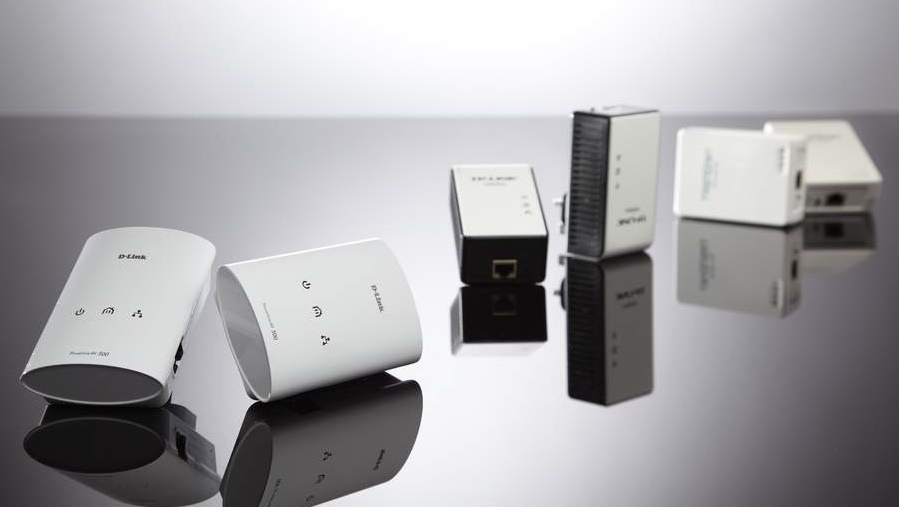3 simple tips to speed up your Wi-Fi
From your refrigerator to your neighbors, these things could be slowing down your Wi-Fi

Did you upgrade to one of the best Wi-Fi routers, yet you still have a poor internet connection? It may be that some common household appliances are to blame. Fortunately, there's a few easy fixes to get you streaming Netflix in no time.
According to new research from Zen Internet, almost all UK adults (99%) are unaware that proximity to large appliances and router placement could be interfering with their Wi-Fi coverage and internet speeds.
Of those surveyed by the UK-based internet service provider (ISP), 76 percent of respondents didn’t know that their neighbors' Wi-Fi router could be slowing down their own connection. This is because routers in close proximity — say in an apartment block — can block their Wi-Fi signal due to the fact that many are operating on the same channel or their frequency bands are clashing.
Likewise, 90 percent of those surveyed didn’t know that their refrigerator, microwave and other large appliances could also be negatively affecting their Wi-Fi connection due to interfering radio signals if they are positioned too close to their Wi-Fi router.
Dispelling common Wi-Fi myths
In a press release announcing its findings, Zen Internet also broke down some common Wi-Fi myths that a surprising number of adults still believe.
For instance, almost a quarter (23%) of respondents think that their PC, laptops and other connected devices must be placed next to their Wi-Fi router to get the best connection. Even worse, almost one in seven (14%) UK adults believe that turning their router off at night can boost its effectiveness the next day.
Despite broadband internet generally being faster than most mobile connections, 29 percent of those surveyed believe using a smartphone as a mobile hotspot provides a better connection than their Wi-Fi.
Sign up to get the BEST of Tom's Guide direct to your inbox.
Get instant access to breaking news, the hottest reviews, great deals and helpful tips.
Router placement is another common myth dispelled by Zen Internet as over half (54%) of respondents weren’t aware that elevating your Wi-Fi router can provide a better connection. Even if you can’t have your router as high as you’d like, putting it up even a little higher will help its Wi-Fi signals spread out further.
Finally, four out of ten (40%) UK adults surveyed are not confident they know what Ethernet is. If possible, connecting your devices over Ethernet as opposed to Wi-Fi will always give you a faster connection with higher speeds and lower latency.
3 tips to improve your home internet connection

Before you go and replace your existing Wi-Fi router or ask your ISP for a broadband upgrade, there are a number of steps you can take to improve your home’s Wi-Fi connection.
Router location
As we mentioned earlier, you should reconsider the placement of your router. Raising it up higher by placing it on top of a bookshelf or even on a floating wall shelf, will allow the signal to travel further. At the same time, you want to ensure that your router isn’t near any large appliances like your refrigerator or microwave as well as your TV, game consoles or baby monitor. It also shouldn’t be hidden and should have a clear line of sight to walls, ceilings and floors to bounce around the signal.
Connect your devices to the right band
This one will take a bit more time but it may be worth taking a closer look at which devices are connected to your router’s 2.4 GHz and 5 GHz bands. While TVs, laptops, smartphones and tablets should be connected to the 5 GHz band, smart home devices such as light bulbs and sensors should be connected to the 2.4GHz band. This way your most bandwidth hungry devices are connected to the faster band.
Find the dead spots
If you find that there are Wi-Fi dead spots around your home, you may want to consider investing in either one of the best Wi-Fi extenders or best powerline extenders so that you can have better internet coverage across your entire home. While a Wi-Fi extender will push the signal from your router farther, a powerline extender uses your home’s electric wiring to provide you with a wired ethernet connection anywhere in your house. If neither of these solutions work, then it may be time to invest in one of the best mesh routers instead. Now you've got super fast wi-fi, check out 11 Google Drive tips to save you time.
Next: Think you know what Wi-Fi stands for? Get ready for a surprise and if you're looking to speed up other gadgets — you can look at our guide on how to speed up your Mac to get it running fast.

Anthony Spadafora is the managing editor for security and home office furniture at Tom’s Guide where he covers everything from data breaches to password managers and the best way to cover your whole home or business with Wi-Fi. He also reviews standing desks, office chairs and other home office accessories with a penchant for building desk setups. Before joining the team, Anthony wrote for ITProPortal while living in Korea and later for TechRadar Pro after moving back to the US. Based in Houston, Texas, when he’s not writing Anthony can be found tinkering with PCs and game consoles, managing cables and upgrading his smart home.
